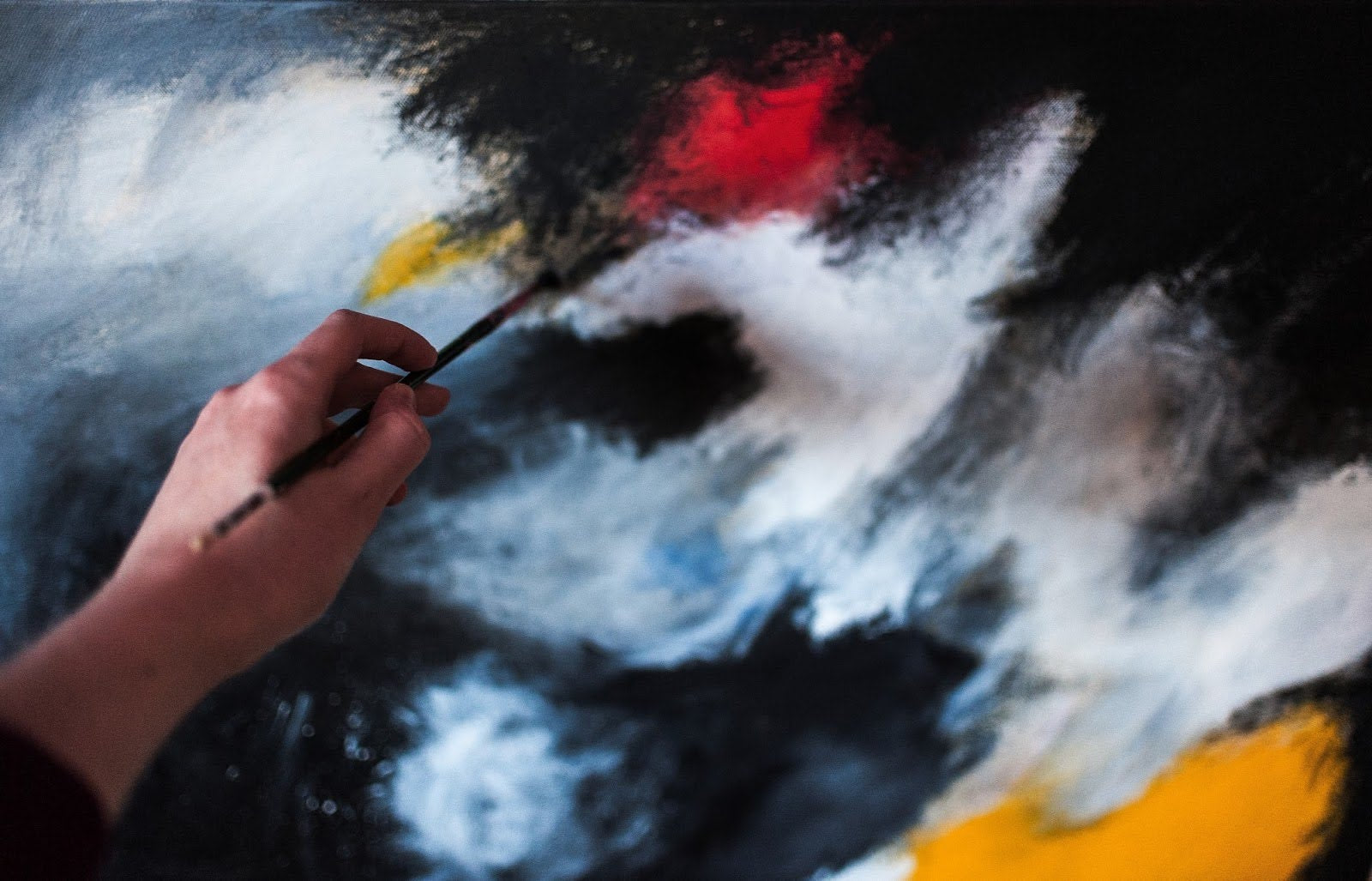Collecting art is about more than beauty or investment. It’s about connection. Each piece holds value, both emotional and financial, which makes protecting it a top priority. One of the easiest ways to keep your collection in good shape is by paying attention to the environment around it. Whether it's a painting you’ve had for years or a new addition, the space you keep it in matters more than most realize.
Over time, things like heat, moisture, and sunlight can wear down even high-quality pieces. Colors fade, materials crack, and surfaces warp. These changes often happen slowly, so they’re easy to miss until the damage is done. Luckily, with a few thoughtful habits, you can extend the life of your art and keep it looking its best.
Control Indoor Climate
One of the first things to manage when protecting your art collection is the indoor climate. Sudden swings in temperature or humidity can break down materials, especially those made from wood, canvas, or paper. Even small changes in your environment can affect an artwork’s shape or color over time.
To help keep conditions stable:
- Use air conditioning during warmer months to control heat. Set your thermostat to a consistent temperature rather than adjusting it from day to night.
- A portable dehumidifier might help during humid seasons, especially in rooms that tend to feel damp or stuffy.
- In drier weather, a humidifier may prevent cracking or drying on wooden frames and paint surfaces.
The goal is to keep your artwork away from the extremes. You don’t need a museum-grade system to achieve this. Often, keeping the temperature somewhere around 70 degrees Fahrenheit and relative humidity around 50 percent strikes a good balance for most homes.
It's also worth keeping an eye on the placement of your pieces. Avoid hanging art directly above vents, heaters, or near kitchens. These spots tend to see bigger shifts in heat or moisture. If you're displaying art in a room that gets warm quickly, like a small office with lots of electronics, it might be worth checking those conditions with a basic temperature and humidity gauge.
Even simple routines, like keeping windows closed on particularly humid days or turning on a fan to circulate air, go a long way toward slowing down environmental wear. It all adds up, and these small actions can help preserve your artwork for many years to come.
Protecting From Sunlight
Natural light brings warmth into a space, but it’s also one of the most damaging elements your artwork can face. Ultraviolet (UV) rays in sunlight can fade pigments and weaken materials over time. This can happen slowly, even in rooms that don’t get direct sunlight throughout the day.
To reduce the harm, start by hanging art away from windows whenever possible. Walls opposite windows or spots with indirect light are usually safer. If you do hang a piece near a window, UV-filtering glass or acrylic makes a big difference. These materials help block out harmful rays while still allowing light in, keeping the artwork safer without changing your space too much.
Here are a few more ways to help manage light exposure:
- Use curtains, blinds, or solar shades to cut down direct sunlight during peak hours
- Consider UV film for windows that can’t be covered easily. It’s barely noticeable but adds protection.
- Reposition or rotate artwork every few months. This helps prevent one side of a piece from fading more than the other.
- Keep bright artificial lighting, especially halogen or fluorescent bulbs, away from sensitive pieces, or swap them for LED lighting that emits less UV.
As an example, someone might display a large canvas near a sun-facing window for months before noticing the colors in one corner starting to dull. Had they rotated the piece, used filtered glass, or pulled the shade during bright hours, they could have balanced out the exposure and limited the fade. Being proactive makes all the difference when it comes to sunlight.
Preventing Pollution Damage
Air pollution might not be as obvious as sunlight or humidity, but it’s just as damaging over time. Smoke, kitchen grease, and airborne chemicals can settle on your artwork and slowly cause wear or discoloration. Materials like paper or unsealed canvas tend to be more sensitive to pollutants, but no piece is completely immune.
Start by thinking about what goes on in the rooms where you hang your art. Kitchens and fireplaces release more particles into the air than you might expect. Avoid placing artwork directly above stoves, vents, or near open flames. The same goes for rooms where people smoke. Even occasional use can lead to buildup on surfaces.
A few simple ways to help protect your art from airborne damage include:
- Keep ventilation good in rooms with art by using fans or opening windows during cleaner parts of the day.
- Run an air purifier in rooms where artwork is displayed, especially if dust or smoke is a concern.
- Dust frames and protective glass regularly using high end and dry microfiber cloth. Avoid harsh sprays or cleaners.
- Place mats or spacers between the artwork and the glass in framed pieces to prevent moisture build-up and to allow air circulation.
Quick touch-ups on your art display routine can help reduce small risks before they turn into bigger problems. It’s about catching the everyday habits that might affect your collection without you even noticing.
Safe Handling And Storage
Protecting art doesn’t end when it’s hanging on the wall. How you handle and store your collection also plays a big role in how long your pieces last. Improper storage or rough handling can cause dents, tears, or smudges. And these are the kinds of problems most easily avoided with a little care.
When moving or touching artwork, your hands might have oils or dirt on them that can transfer to surfaces. Always use clean hands or clean cotton gloves if you're handling valuable or delicate items directly. If that’s not available, wash and dry your hands thoroughly before touching any art.
When it comes to storage, keep these tips in mind:
- Choose a room that stays dry and has stable temperatures.
- Keep stored artwork off the floor, using shelving or padded surfaces instead.
- Use acid-free paper or boards for wrapping or separating pieces.
- Wrap edges or corners of frames with protective padding to prevent bumps or scratches.
- Store paintings vertically, like books on a shelf, without stacking anything on top.
If you ever need to transport artwork to another location, use rigid containers and make sure everything is secured snugly but gently. Even short car rides can cause stress to the materials if they sway or bump around. Padding isn’t just comfort. It helps preserve the integrity of the artwork.
Taking the time to store items properly can mean the difference between keeping pieces in great condition or discovering damage later. It takes less effort to store art right than to try and restore something that’s been hurt by poor conditions.
Keep Your Art Collection Safe
Your art reflects your tastes, your experiences, and your creative eye. Whether you’ve picked up pieces on travels, supported independent artists, or built a collection over time, protecting that investment comes down to a mix of good habits and thoughtful choices. Controlling light, climate, handling, and pollution gives your artwork the best chance at staying vibrant and steady for the long run.
You don’t need to do everything at once. Start with a few changes, like rearranging placement or using UV glass, and add as you go. Over time, these small steps build up to a solid system of care. Treating your art collection with care now helps it bring joy years into the future.
Bring new life to your space while keeping your collection safe. Explore art for the home to find pieces that beautifully express your personal style. At ArtFinest, discover original artworks that resonate with you and enjoy complimentary shipping within the USA.



